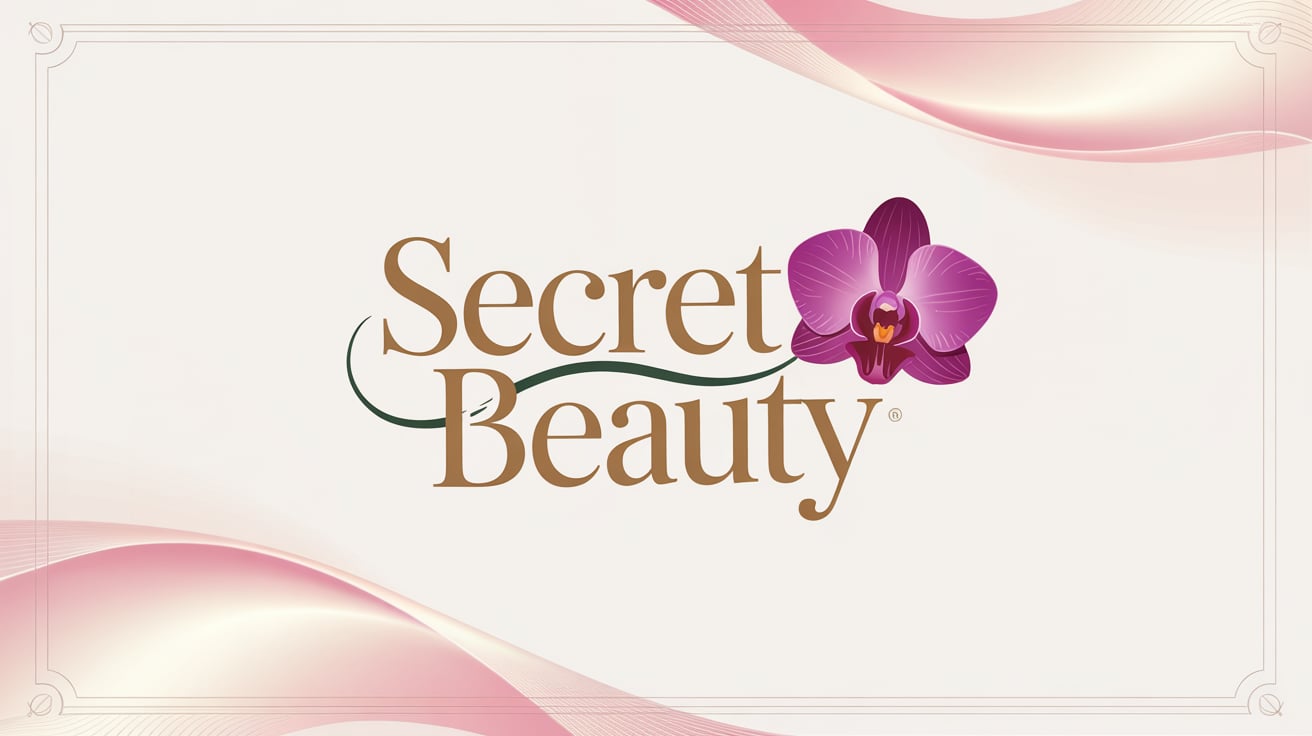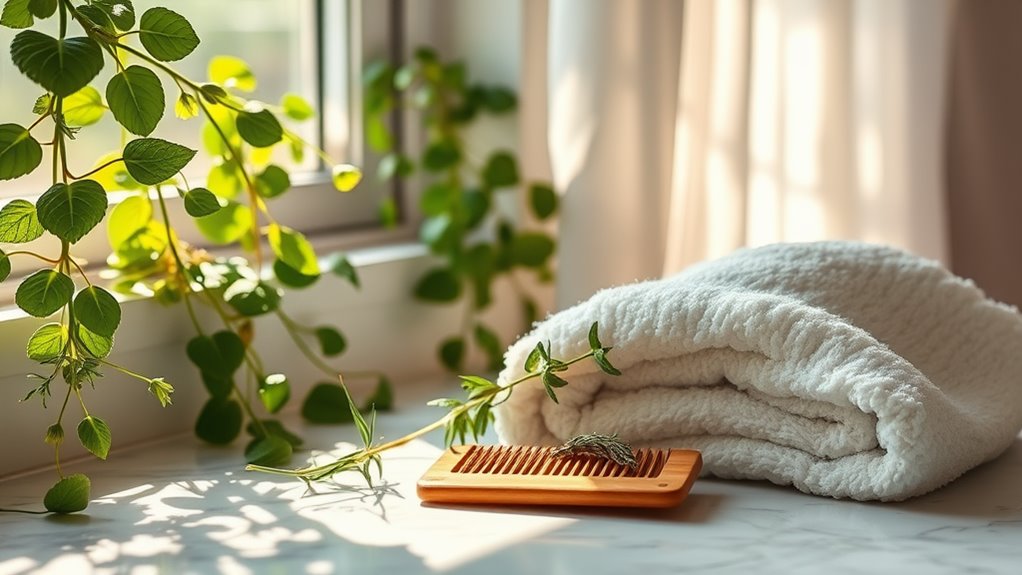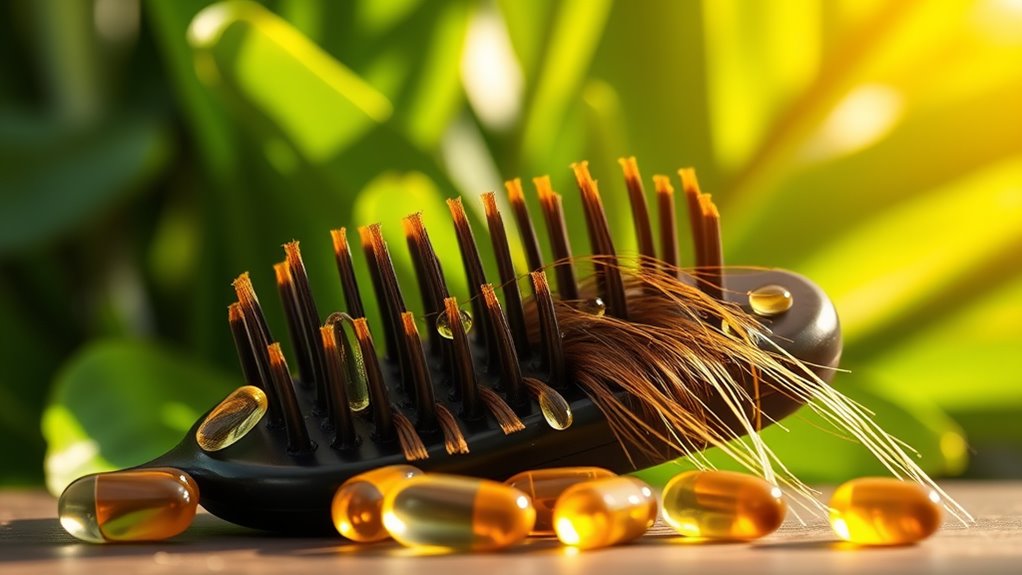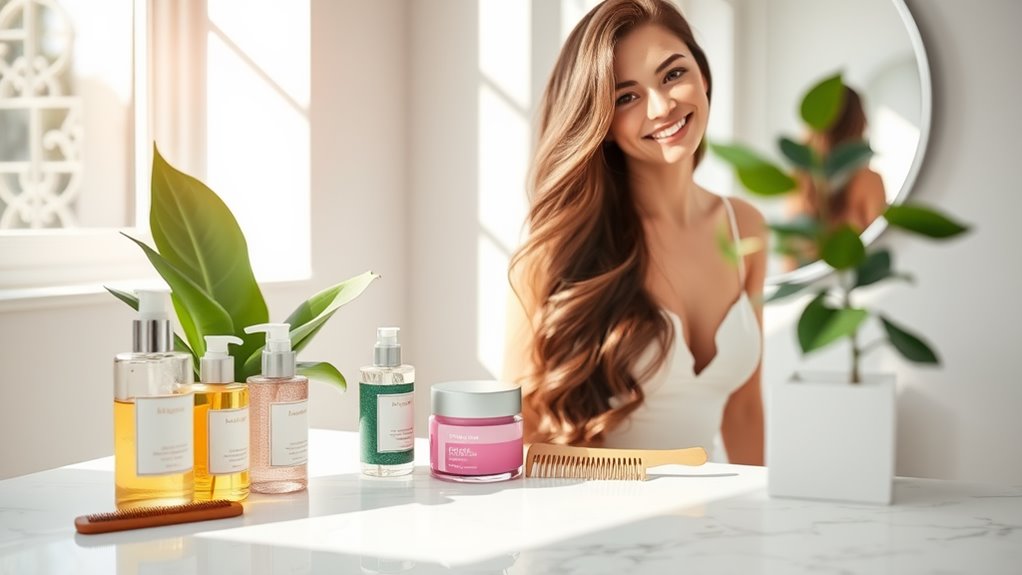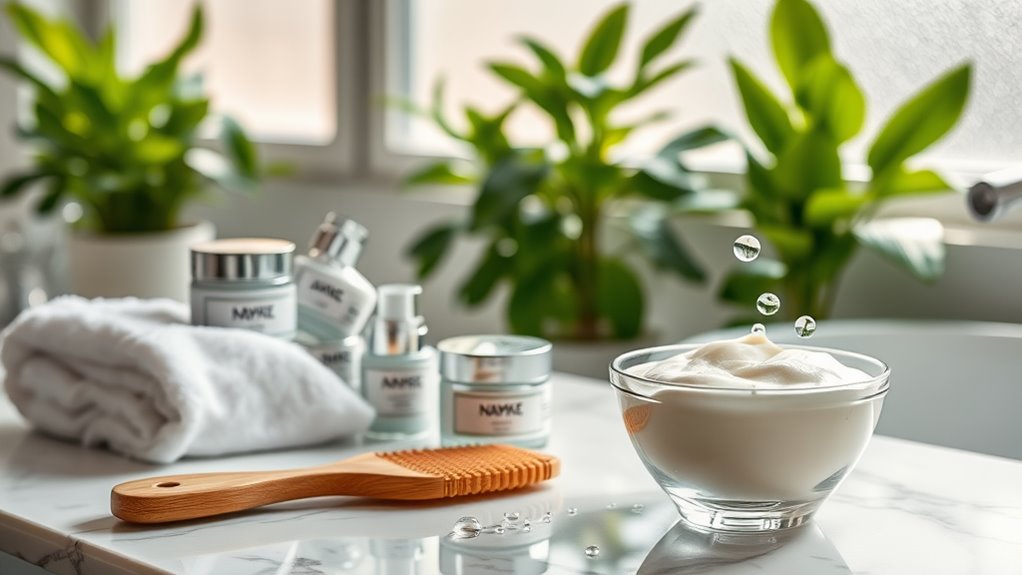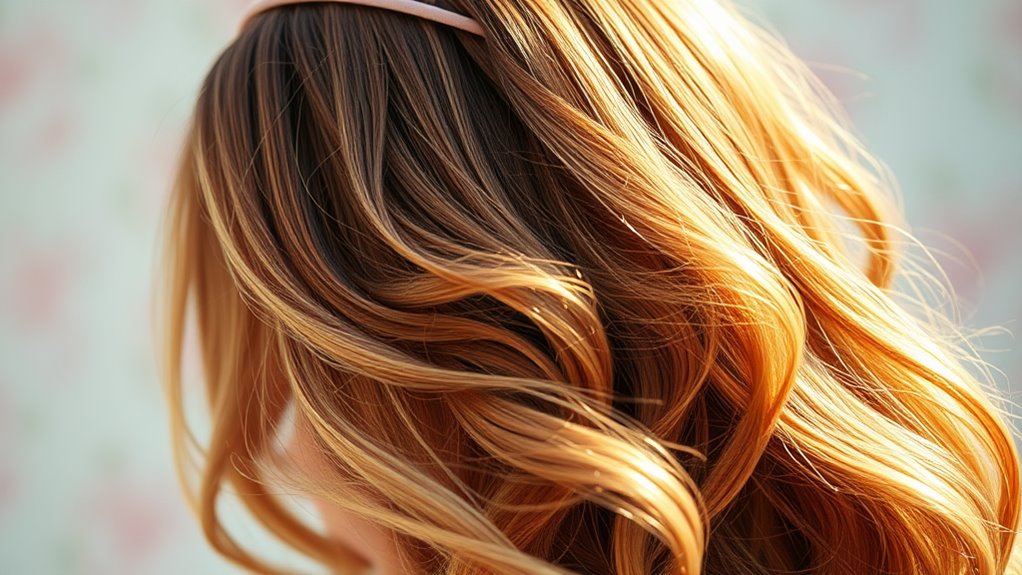How to Make Hair Grow Faster Without Products
To make your hair grow faster without relying on products, start by optimizing your diet with protein, iron, and healthy fats. Stay hydrated by drinking plenty of water and eating water-rich fruits and veggies. Incorporate regular scalp massages to boost circulation. Establish a consistent hair care routine and protect your hair from environmental damage. Managing stress and getting enough sleep also play an essential role. There’s more you can do to achieve that luscious mane!
Key Takeaways
- Incorporate protein-rich and iron-rich foods in your diet to support hair growth and improve blood circulation.
- Stay hydrated by drinking at least eight glasses of water daily to enhance nutrient transport to hair follicles.
- Perform regular scalp massages to stimulate blood circulation and promote relaxation, aiding in hair growth.
- Maintain a consistent hair care routine by using gentle products and scheduling regular trims to prevent split ends.
- Protect hair from environmental damage and limit heat exposure by using heatless styling methods and covering hair outdoors.
Optimize Your Diet for Hair Growth
To boost your hair growth, you need to optimize your diet. Focus on incorporating nutrient-rich foods that promote hair health.
Protein is essential, so include lean meats, fish, eggs, and legumes in your meals. Iron-rich foods like spinach and lentils improve blood circulation to your scalp, fueling hair growth.
Don’t forget healthy fats found in avocados and nuts; they keep your hair moisturized and strong. Vitamins A, C, and E are crucial too, so load up on colorful fruits and vegetables.
Biotin, found in whole grains and eggs, also supports hair growth. By strategically planning your meals, you’re not just nourishing your body but directly enhancing your hair’s potential for rapid growth. Nutrient-packed foods are vital in this process as they provide the essential vitamins and minerals needed for optimal hair health.
Your diet’s impact on hair health is profound.
Stay Hydrated for Healthy Hair
How crucial is hydration for your hair’s health? Staying hydrated is essential for maintaining strong, vibrant hair. Water helps transport nutrients and oxygen to hair follicles, promoting growth and preventing dryness. Aim for at least eight glasses of water daily to keep your hair and body in ideal condition. Additionally, incorporating effective hydration techniques into your routine can further enhance your skin and hair health.
Here’s a concise overview of hydration’s impact on hair health:
| Benefit | Effect on Hair | Sources of Hydration |
|---|---|---|
| Nutrient Transport | Enhances growth | Water |
| Moisture Retention | Reduces brittleness | Herbal teas |
| Scalp Health | Prevents flakiness | Fruits (e.g., watermelon) |
| Overall Vitality | Boosts luster and shine | Vegetables (e.g., cucumbers) |
Hydration is your hair’s best ally—commit to it!
Scalp Massage Techniques to Stimulate Growth
Scalp massages can greatly boost your hair growth by increasing blood circulation and promoting relaxation.
You’ll want to explore effective techniques that fit into your routine, ensuring you’re getting the most benefit. One effective method is to apply gentle pressure with your fingertips in circular motions, which can enhance blood circulation and help nourish your hair follicles.
Let’s also discuss how often and how long you should be massaging your scalp for ideal results.
Benefits of Scalp Massage
While many factors influence hair growth, incorporating a scalp massage into your routine can have significant benefits.
By stimulating blood circulation in your scalp, you’re enhancing nutrient delivery to hair follicles, which is essential for growth. This increased circulation also helps remove toxins that could hinder hair health.
Regular massages can reduce tension and stress, promoting a healthier environment for hair to thrive. Additionally, the act of massaging can encourage relaxation, leading to improved overall well-being.
When you prioritize scalp massages, you’re not just investing in your hair; you’re cultivating a holistic approach to your health. Ultimately, this simple practice can play a pivotal role in achieving the luscious locks you desire.
Techniques for Effective Massage
To effectively stimulate hair growth, you can use several simple yet powerful scalp massage techniques.
Start by using your fingertips to apply gentle pressure in circular motions across your scalp. Focus on areas where hair growth is slower, giving them extra attention.
You might also try the kneading technique, where you grasp sections of your scalp and gently pull. This enhances blood flow and loosens tension.
For a deeper effect, use your palms to make sweeping motions from front to back, promoting circulation.
Finally, incorporate light tapping with your fingertips to invigorate the scalp further.
These techniques not only stimulate hair follicles but also create a relaxing experience, enhancing your overall well-being.
Keep your movements intentional and rhythmic for maximum impact.
Frequency and Duration Guidelines
Incorporating scalp massage into your routine can markedly enhance hair growth, but knowing how often and how long to do it’s essential. Aim for a massage three to five times a week, dedicating about 5 to 10 minutes each session.
This frequency strikes a balance, allowing your scalp to benefit from stimulation without overdoing it. During each session, use your fingertips to apply gentle pressure in circular motions, focusing on areas where hair growth is desired.
Consistency is vital; make it a non-negotiable part of your self-care. Over time, you’ll notice improved blood circulation and healthier hair follicles, setting the stage for faster hair growth.
Embrace this simple yet effective practice, and you’ll be well on your way to mastery.
Maintain a Regular Hair Care Routine
Maintaining a regular hair care routine can greatly enhance your hair’s growth potential. Start by establishing a consistent washing schedule that matches your hair type—this keeps your scalp healthy and free from buildup.
Use a gentle shampoo and follow with a nourishing conditioner to hydrate and strengthen strands. Incorporate regular trimming every 6-8 weeks to eliminate split ends and promote healthier growth.
Don’t forget to be mindful of your brushing technique; use a wide-toothed comb to minimize breakage. Additionally, protect your hair from excessive heat by limiting the use of styling tools.
Finally, prioritize a balanced diet rich in vitamins and minerals, as internal health reflects externally. A disciplined routine guarantees your hair thrives and reaches its growth potential. Additionally, nurturing your scalp through techniques like scalp massages can stimulate blood circulation and support healthy hair growth.
Incorporate Essential Oils Naturally
A healthy hair care routine sets the stage for exploring natural solutions like essential oils.
These oils can nourish your scalp and promote hair growth without the need for harsh chemicals. Here’s how to incorporate them effectively:
-
Choose the right oils: Consider rosemary for circulation or lavender for its calming properties.
-
Dilute properly: Mix essential oils with a carrier oil like coconut or jojoba to avoid irritation.
-
Massage regularly: Gently massaging the oil into your scalp can stimulate hair follicles and enhance absorption.
-
Be consistent: Incorporate this practice into your routine at least once a week for best results. Research supports that natural ingredients can effectively stimulate follicle health and promote faster hair growth.
Avoid Heat Styling Tools
When you want your hair to grow faster, avoiding heat styling tools is essential.
They can cause damage and breakage, slowing your progress.
Instead, try heat-free alternatives and adopt healthy hair practices for better results.
Importance of Heat Protection
If you want your hair to grow faster and healthier, protecting it from heat damage is crucial. Heat styling tools can strip your hair of its natural moisture, leading to breakage and slow growth.
To maintain your hair’s integrity, consider these essential tips:
-
Limit Heat Exposure: Try to reduce the frequency of heat styling sessions.
-
Use a Heat Protectant****: If you must style, apply a heat protectant spray to shield your strands.
-
Opt for Lower Temperatures****: When using heat tools, choose the lowest effective temperature.
-
Embrace Natural Styles: Explore no-heat hairstyles that promote growth without the damage.
Alternatives to Heat Styling
Instead of relying on heat styling tools, you can explore various alternatives that keep your hair healthy and promote growth.
Embrace air-drying techniques; they minimize damage while enhancing your hair’s natural texture. Consider braiding damp hair for effortless waves or using twist-outs for defined curls without heat.
You might also experiment with styling accessories like headbands or clips, which add flair without compromising your hair’s integrity. If you’re looking for volume, opt for a volumizing mousse on damp hair before air-drying.
Additionally, practice protective hairstyles such as buns or twists to prevent breakage. By choosing these heat-free methods, you’ll not only maintain your hair’s health but also encourage faster growth over time.
Healthy Hair Practices
To achieve healthy hair and encourage growth, it’s essential to minimize heat styling tools in your routine. Frequent use of blow dryers, straighteners, and curling irons can lead to damage and breakage, stunting your hair’s potential.
Instead, adopt healthier practices that promote growth and liveliness.
- Embrace air-drying: Let your hair dry naturally whenever possible.
- Opt for protective hairstyles: Braids and buns can reduce manipulation and protect ends.
- Use a wide-tooth comb: Gently detangle wet hair to minimize breakage.
- Experiment with heatless styling methods: Try rollers or braiding for waves.
Protect Your Hair From Environmental Damage
Although you may not realize it, environmental factors like sun exposure, pollution, and harsh weather can greatly impact your hair’s health and growth.
To protect your hair, start by wearing a hat or scarf when you’re outdoors, especially during peak sun hours. This shields your strands from damaging UV rays.
When it comes to pollution, consider rinsing your hair after exposure to city grime to prevent buildup. Additionally, be mindful of extreme weather—cold winds can dehydrate your hair, while humidity can lead to frizz.
Use a microfiber towel to gently dry your hair, reducing breakage. Finally, hydrate with water and nourish your body with a balanced diet to foster resilience against environmental stressors.
Your hair will thank you!
Manage Stress for Better Hair Health
Stress can greatly impact your hair health, so it’s essential to identify what triggers it in your life.
By practicing relaxation techniques and prioritizing sleep hygiene, you’ll create a more conducive environment for hair growth.
Let’s explore how managing stress can lead to healthier, faster-growing hair.
Identify Stress Triggers
What triggers your stress? Identifying these stressors is essential for maintaining healthy hair. Stress can lead to hair loss, so understanding what affects you allows you to take control.
Consider these common triggers:
-
Work pressure: Deadlines and overwhelming tasks can spike your anxiety.
-
Personal relationships: Conflicts or lack of support can weigh heavily on your mind.
-
Financial concerns: Money worries often create persistent stress.
-
Health issues: Physical ailments can lead to emotional turmoil, affecting your overall well-being.
Practice Relaxation Techniques
Finding calm in the chaos of daily life can greatly boost your hair’s health. Stress triggers can lead to hair loss, so embracing relaxation techniques is essential.
Start by practicing deep breathing; inhale slowly through your nose, hold for a few seconds, then exhale through your mouth. Incorporate mindfulness meditation into your routine, allowing your mind to focus on the present moment.
Gentle yoga or stretching can also relieve tension, improving blood circulation to your scalp. Consider journaling your thoughts to release pent-up emotions.
Regularly engaging in these practices not only reduces stress but also fosters a healthier environment for hair growth. By mastering relaxation, you empower yourself to support your hair’s health and overall well-being.
Prioritize Sleep Hygiene
Achieving quality sleep plays a significant role in hair health, especially after implementing relaxation techniques. When you prioritize your sleep hygiene, you create an environment conducive to recovery and growth, directly impacting your hair.
Here’s how to enhance your nightly routine:
-
Establish a Sleep Schedule: Go to bed and wake up at the same time daily.
-
Create a Relaxing Environment****: Keep your bedroom dark, cool, and quiet.
-
Limit Screen Time: Avoid electronic devices at least an hour before bed.
-
Practice Mindfulness****: Engage in deep breathing or meditation to calm your mind.
Get Enough Sleep for Optimal Hair Growth
While you may not realize it, getting enough sleep is essential for promoting ideal hair growth. During sleep, your body undergoes critical repair processes, including the regeneration of hair follicles.
Aim for 7 to 9 hours of quality sleep each night. This allows your body to balance hormone levels, particularly growth hormone, which plays a significant role in hair growth.
Establish a consistent sleep schedule, and create a calming bedtime routine to signal your body that it’s time to rest. Limit screen time before bed, as blue light can disrupt your natural sleep cycle.
Embrace Natural Hair Treatments at Home
If you want to boost your hair growth naturally, embracing homemade treatments can make a significant difference.
These remedies tap into the power of nature, helping you nourish your hair without harsh chemicals. Here are some effective treatments you can easily whip up at home:
-
Coconut Oil: Rich in fatty acids, it moisturizes and strengthens hair.
-
Egg Mask: Packed with protein, it promotes hair growth and adds shine.
-
Aloe Vera: Known for its soothing properties, it helps reduce scalp irritation.
-
Onion Juice: Its sulfur content boosts circulation, encouraging hair follicles to thrive.
Incorporate these treatments into your routine, and you’ll likely notice healthier, faster-growing hair in no time!
Frequently Asked Questions
How Long Does It Typically Take to See Hair Growth Results?
Typically, you’ll notice hair growth results in about six to eight weeks. However, factors like genetics, health, and diet can influence this timeline. Stay patient and consistent to achieve the best results for your hair.
Can Genetics Influence the Speed of Hair Growth?
Yes, genetics definitely influences the speed of hair growth. If your family members have thick, fast-growing hair, you’re likely to experience similar growth patterns. Understanding your genetic background can help set realistic expectations for your hair growth journey.
Is It Safe to Trim Hair While Trying to Grow It?
Trimming your hair while trying to grow it is safe and actually beneficial. It removes split ends, preventing breakage, and promotes healthier growth. Regular trims help maintain your hair’s overall strength and appearance. Don’t hesitate!
What Are Signs of Unhealthy Hair Growth to Watch For?
Watch for signs like excessive breakage, split ends, or a lackluster appearance. If your hair feels brittle or looks thin, it’s time to reassess your care routine and make necessary adjustments for healthier growth.
Does Hair Color Affect Its Growth Rate?
Hair color itself doesn’t directly affect growth rate. However, chemical treatments can damage hair, leading to breakage. Focusing on healthy practices guarantees your hair grows strong and vibrant, regardless of the color you choose.
